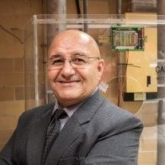State-of-the-Art Photocatalytical Technology in North America
A special issue of Catalysts (ISSN 2073-4344). This special issue belongs to the section "Photocatalysis".
Deadline for manuscript submissions: closed (31 December 2020) | Viewed by 25788
Special Issue Editors
Interests: photochemical reaction engineering, including photocatalysis, UV/hydrogen peroxide, fenton/photo-fenton, etc.; integration of advanced oxidation technologies and biological processes for wastewater treatment; effects of climate change on the quality and quantity of groundwater
Special Issues, Collections and Topics in MDPI journals
Interests: industrial process modeling and optimization; development of solar photocatalysis; advancement of simulated moving bed technology for reactive separation
Special Issues, Collections and Topics in MDPI journals
Special Issue Information
Dear Colleagues,
Recent studies have been devoted to the use of advanced oxidation processes (AOPs) for the destruction of organic materials from wastewater, mainly because AOPs can entirely eradicate organics. Depending on the applications, different AOPs have been studied. Among AOPs, photocatalysis is a promising process of eradicating almost all types of organics in wastewater. Despite all advantages of TiO2, there are two major limitations in its photocatalytic activity, its activation in the ultraviolet range and a high rate of electron-hole recombination, leading to its low efficiency. Therefore, the photocatalytic efficiency depends on how well a photocatalyst can prevent electron-hole pair recombination. There have been many studies on photocatalysis including doping metals and non-metals as well as mixing different photocatalysts. This Special Issue will focus on the latest developments in photocatalysis including photochemical reaction engineering, photoreactor design, photocatalyst development, or combining photocatalysis with other processes to enhance organic degradation in water and wastewater.
This Special Issue strives to provide an overview on state-of-the-art photocatalytical technology in North America.
Prof. Dr. Mehrab Mehrvar
Prof. Dr. Ajay K. Ray
Guest Editors
Manuscript Submission Information
Manuscripts should be submitted online at www.mdpi.com by registering and logging in to this website. Once you are registered, click here to go to the submission form. Manuscripts can be submitted until the deadline. All submissions that pass pre-check are peer-reviewed. Accepted papers will be published continuously in the journal (as soon as accepted) and will be listed together on the special issue website. Research articles, review articles as well as short communications are invited. For planned papers, a title and short abstract (about 100 words) can be sent to the Editorial Office for announcement on this website.
Submitted manuscripts should not have been published previously, nor be under consideration for publication elsewhere (except conference proceedings papers). All manuscripts are thoroughly refereed through a single-blind peer-review process. A guide for authors and other relevant information for submission of manuscripts is available on the Instructions for Authors page. Catalysts is an international peer-reviewed open access monthly journal published by MDPI.
Please visit the Instructions for Authors page before submitting a manuscript. The Article Processing Charge (APC) for publication in this open access journal is 2700 CHF (Swiss Francs). Submitted papers should be well formatted and use good English. Authors may use MDPI's English editing service prior to publication or during author revisions.
Keywords
- Photocatalysis
- Doping photocatalysts
- Advanced Oxidation Technologies
- Photocatalytic Reaction Engineering
- Photoreactor Design
- Photocatalytic Efficiency
- Combined Photocatalysis with other processes
- Photocatalytic Kinetics






